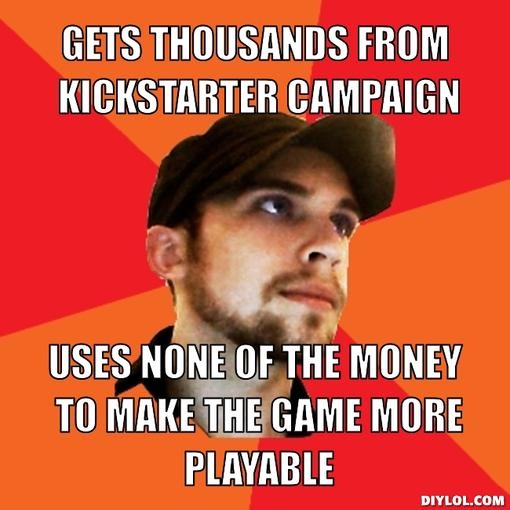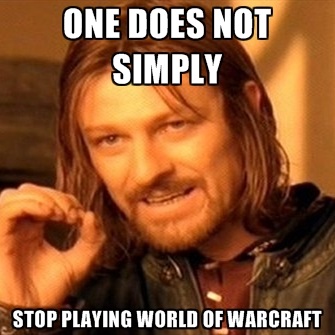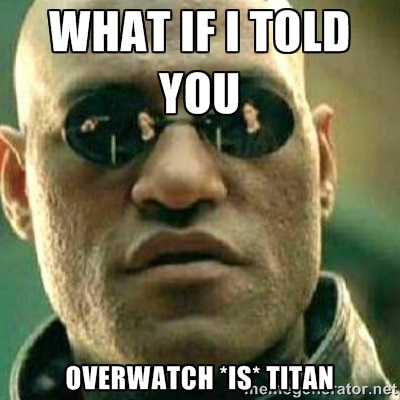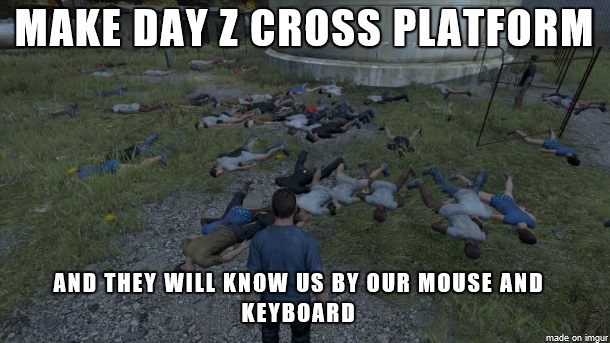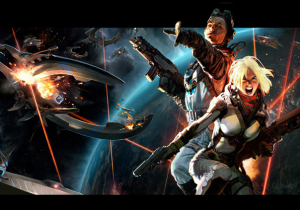Predictions 2015: The Indie & The Mega-Corp

By Jaime Skelton (MissyS), Senior Editor
2014 was a little like the story of David and Goliath for the online gaming industry. We saw the rise of the indie developer and the humbling of the giant mega-gaming corporations. As gamers, we’re starting to embrace the idea that the little guy can actually win and that success can’t simply be measured in subscriber numbers. This year, I think we’re going to see more balance: the giant will get up from the fall and continue with lessons learned, while the unlikely hero will gain more even footing for the future. Comparisons to ancient stories aside, allow me to look forward and predict what the next chapter in both their stories are for 2015.
Kickstarter Reclaimed By Indies
In late 2013 and most of 2014, the video games industry saw a heavy surge of crowdfunding both on and off Kickstarter. What started as a trend for smaller game studios to gain some awareness and funding became a bandwagon, and the indie studios that had previously earned their success on crowdfunding platforms were becoming obscured by larger companies. Leviathans swept through, gamers gave, and now gamers wait for giants like Shroud of the Avatar, Star Citizen, and Camelot Unchained.
While I love the potential of crowdfunding when it comes to video games, it’s also proven an unsustainable fad. Kickstarter has made many of us small-time investors with no experience or education in investing. In short, gamers have become easy prey. We’re easily swayed by promises of early access and extra goodies by becoming “founders,” easily wooed by celebrity names in the field (note the games listed at the end of the last paragraph), and easily forgetful of the fact that we don’t get our money back once funded even if the developers up and disappear without fulfilling their promises. Even without a funding progress bar, founder’s packs have not only become plentiful in the field, they’ve also sometimes jumped to unreasonable levels (like $500 for a free to play game already developed).
Pocketbooks and patience are becoming exhausted. As a result, sites like Kickstarter are seeing less big name titles and more indie projects. Certain games, like Shards Online, are making second rounds on Kickstarter after initial failures. I’m sure this trend will continue through 2015, and small video game developers will again start seeing success while the leviathans return to their hoards. Video game crowdfunding needs to return to its origins, especially when it comes to MMOs – where we seem to be happy to throw millions of dollars to industry celebrities in hopes of the next big thing.
Blizzard Regains Dominance
It seems everyone has intense feelings toward Blizzard Entertainment these days. Still, there’s little argument that Blizzard doesn’t produce high quality games that appeal to large audiences, even with stacks of criticism enough to wallpaper their offices many times over. Heck, I wouldn’t even label myself a fan, but here I am playing World of Warcraft and Diablo III again, along with an occasional match of Hearthstone. (“Dammit, Blizzard” might be one of my most regularly uttered phrases. Even I hate myself sometimes when I find myself launching Battle.net.)
2015 is shaping up to be the biggest year yet for Blizzard. On top of a successful new WoW expansion that does a lot to rekindle old flames, and Hearthstone becoming a household name with growing success as an eSport, both Heroes of the Storm and Overwatch are slated to see beta testing this year. Heroes of the Storm may not be able to knock the top three MOBAs out of their nest, but it will certainly succeed well enough to support itself for at least a few years. Meanwhile Overwatch’s hype train took off at hyperspeed from the first moment the game emerged at Blizzcon 2014.
Even for a major company like Blizzard, six online games (yes, Starcraft, you aren’t completely forgotten) and millions of players is a lot to ask any company to manage. So far, Blizzard has survived with a grace that often makes you forget one company rules them all. Will HotS and Overwatch be enough to break that calm? That I can’t predict. What I can predict is that Blizzard will once again regain the lion’s share of the online gaming market, with two new products and a diverse portfolio that keeps old players coming back and new players coming in.
More Mobile, More Console
It’s pretty obvious that online multiplayer is taking off on both mobile platforms and consoles. Technically both adapted to online play early, but in limited genres: consoles had their shooters and iOS and Android had social games. Large scale multiplayer has been, until recently, the domain of the PC. Within the past few years, however, the demand has grown. Mobile online gaming has significantly bloomed in the past few years, to the point where MOBAs like Vainglory have braved the challenges of mobile technology and come forward as champions of a new era of mobile gaming. Even the traditional MMO publisher Snail Games is now introducing its W3D mobile gaming device.
Consoles are taking longer to take to adapt to the demand for MMOs. The reasons why are long enough to deserve their own essay. Suffice it to say, console MMOs are complicated from approximately every aspect imaginable. Despite this, more developers are taking the challenge: for example, SMITE and Neverwinter are headed to Xbox One, H1Z1 and Planetside 2 to PS4. Prepare to see more announcements of console releases coming this year, even if cross-platform play’s future is looking bleak.
More of the Same
It’s a boring prediction, but it’s also the one I’m most confident in: despite everything, the year will generally be more of the same patterns, trends, and games that we saw in 2014.
It isn’t that the online gaming industry is stale, although from year to year it may appear that way. It’s that change is slow. Video games take time to produce, and it may be months or years before developers can react to new trends. Take the sandbox voxel genre, for instance. Minecraft saw its alpha release in 2009, but it wasn’t until 2014 that our inboxes were suddenly inundated with announcements for sandbox voxel MMOs like Trove and SkySaga. The pattern has been repeated many times over the years – look at the gaps between EverQuest and World of Warcraft, or League of Legends and the current surge of pop-up MOBAs.
Overnight innovation just isn’t possible when it comes to MMOs: there’s too much work involved at every level of the game’s existence. So when you look at this year’s predictions, don’t feel glum if the outlook is bleak. Just take a look at the bigger picture, and realize that change is happening and always will be.
Articles You May Enjoy
- SMITE Patch 3.7 Preview - Grim Weaver
- Visual rework to match last year's Arachne skill rework in patch 3.7 - Grim Weaver.
- Albion Online's Percival Update Is Coming Soon
- Albion Online's seventh major update is on the way, and is entitled "Percival".
- EVE Online: New Player Experience Expands with Dedicated Career Program
- EVE Online has launched its AIR Career Program, the next installment of the new player experience for the iconic spaceship MMO.


